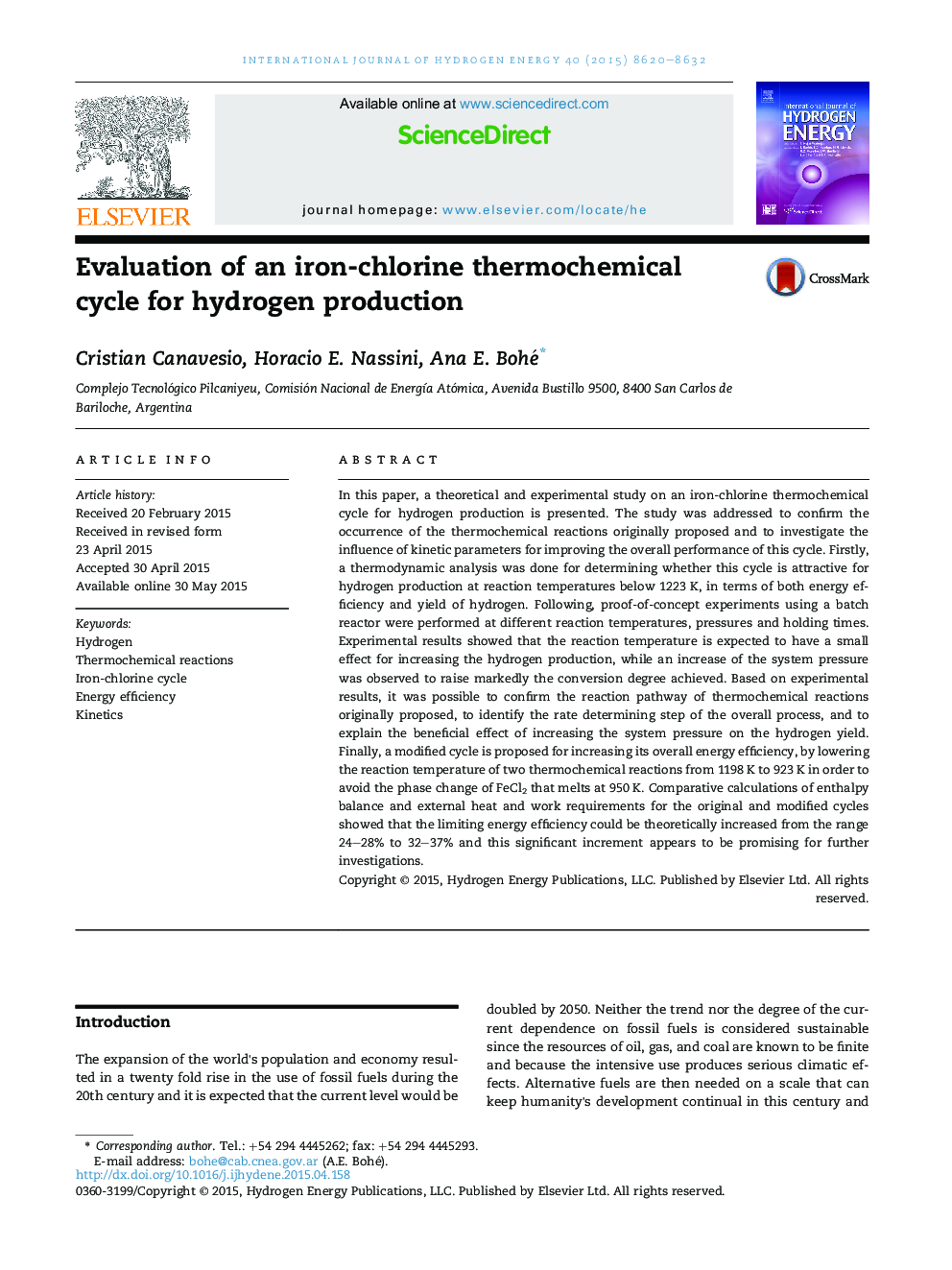| Article ID | Journal | Published Year | Pages | File Type |
|---|---|---|---|---|
| 1271315 | International Journal of Hydrogen Energy | 2015 | 13 Pages |
•An iron-chlorine thermochemical cycle for hydrogen production was evaluated theoretically and experimentally.•A thermodynamic analysis was carried out to estimate the limiting energy efficiency of the cycle.•Proof-of-concept experiments were done in a batch reactor at laboratory scale for different experimental conditions.•The influence of the reaction temperature, system pressure and holding time on the hydrogen yield was investigated.•A modified version of the original cycle was proposed for increasing its overall energy efficiency.
In this paper, a theoretical and experimental study on an iron-chlorine thermochemical cycle for hydrogen production is presented. The study was addressed to confirm the occurrence of the thermochemical reactions originally proposed and to investigate the influence of kinetic parameters for improving the overall performance of this cycle. Firstly, a thermodynamic analysis was done for determining whether this cycle is attractive for hydrogen production at reaction temperatures below 1223 K, in terms of both energy efficiency and yield of hydrogen. Following, proof-of-concept experiments using a batch reactor were performed at different reaction temperatures, pressures and holding times. Experimental results showed that the reaction temperature is expected to have a small effect for increasing the hydrogen production, while an increase of the system pressure was observed to raise markedly the conversion degree achieved. Based on experimental results, it was possible to confirm the reaction pathway of thermochemical reactions originally proposed, to identify the rate determining step of the overall process, and to explain the beneficial effect of increasing the system pressure on the hydrogen yield. Finally, a modified cycle is proposed for increasing its overall energy efficiency, by lowering the reaction temperature of two thermochemical reactions from 1198 K to 923 K in order to avoid the phase change of FeCl2 that melts at 950 K. Comparative calculations of enthalpy balance and external heat and work requirements for the original and modified cycles showed that the limiting energy efficiency could be theoretically increased from the range 24–28% to 32–37% and this significant increment appears to be promising for further investigations.
